Board books including English and Te Reo Māori for basic concepts are being welcomed with open arms by young families all over New Zealand. Jane Arthur evaluates four, plus a tale with a tough princess at its centre.
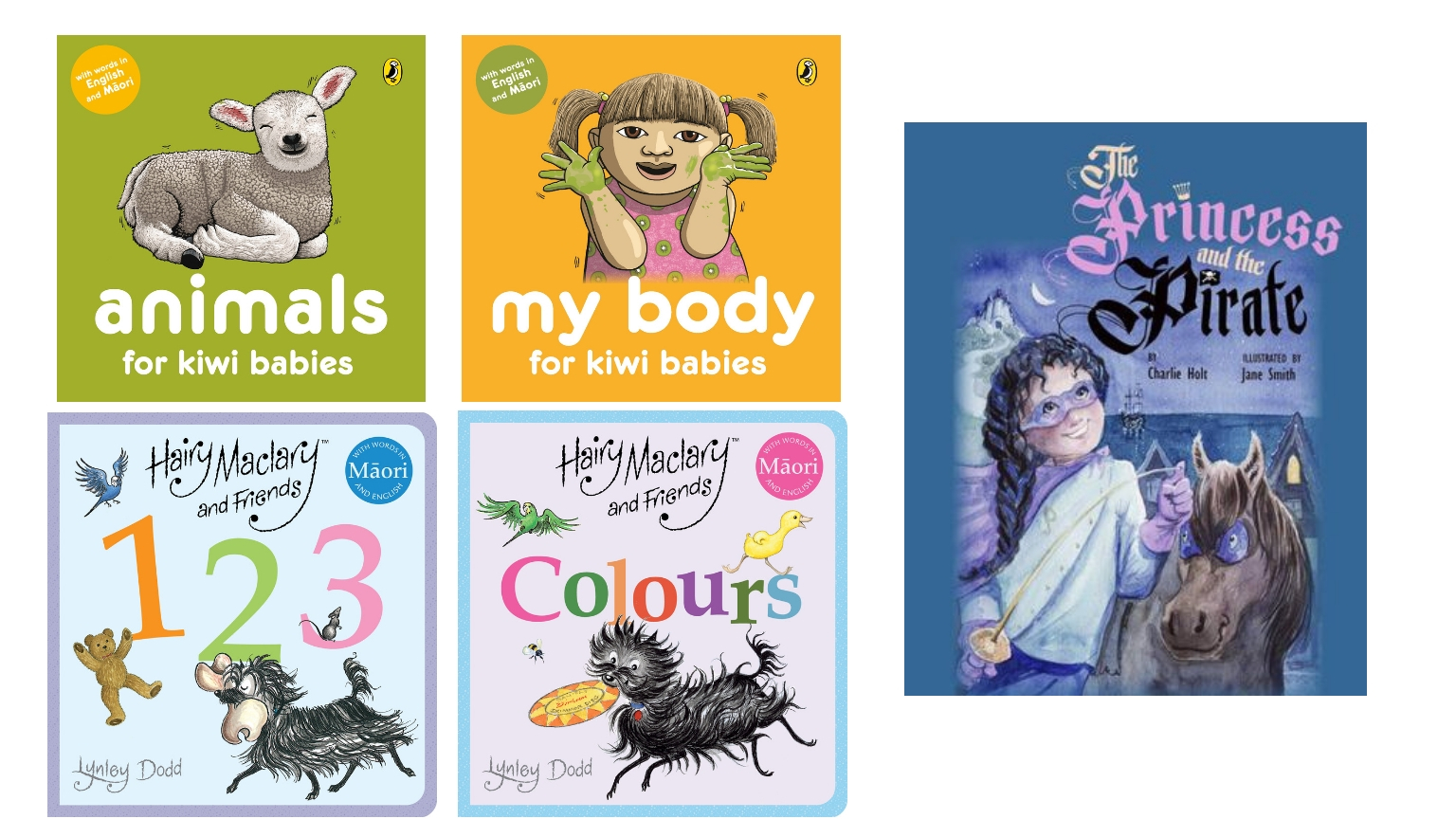
My Body for Kiwi Babies and Animals for Kiwi Babies, by Matthew and Fraser Williamson (Puffin)
This pair of board books are simple and super-chic, with bold colour choices, lots of white space, a big, clear font and illustrations that are part-caricature, part-realist. They follow the first two in the series, Counting and Colours.
This pair of board books are simple and super-chic…
Each spread has an illustration on the right, and two words on the left, English then te reo Māori, including “dog / kurī” and “foot / waewae”. The insides of the books are completely bilingual, including the title pages, but the front and back covers are only in English. This implies the books are aimed at children whose first language is English, though part of me wishes the publishers had found a way to include te reo here, too, as then these books would have been equally valuable as first-concept books for te reo speakers. There’s a simple guide at the back for pronouncing te reo Māori, which confirms the English-first market for these.
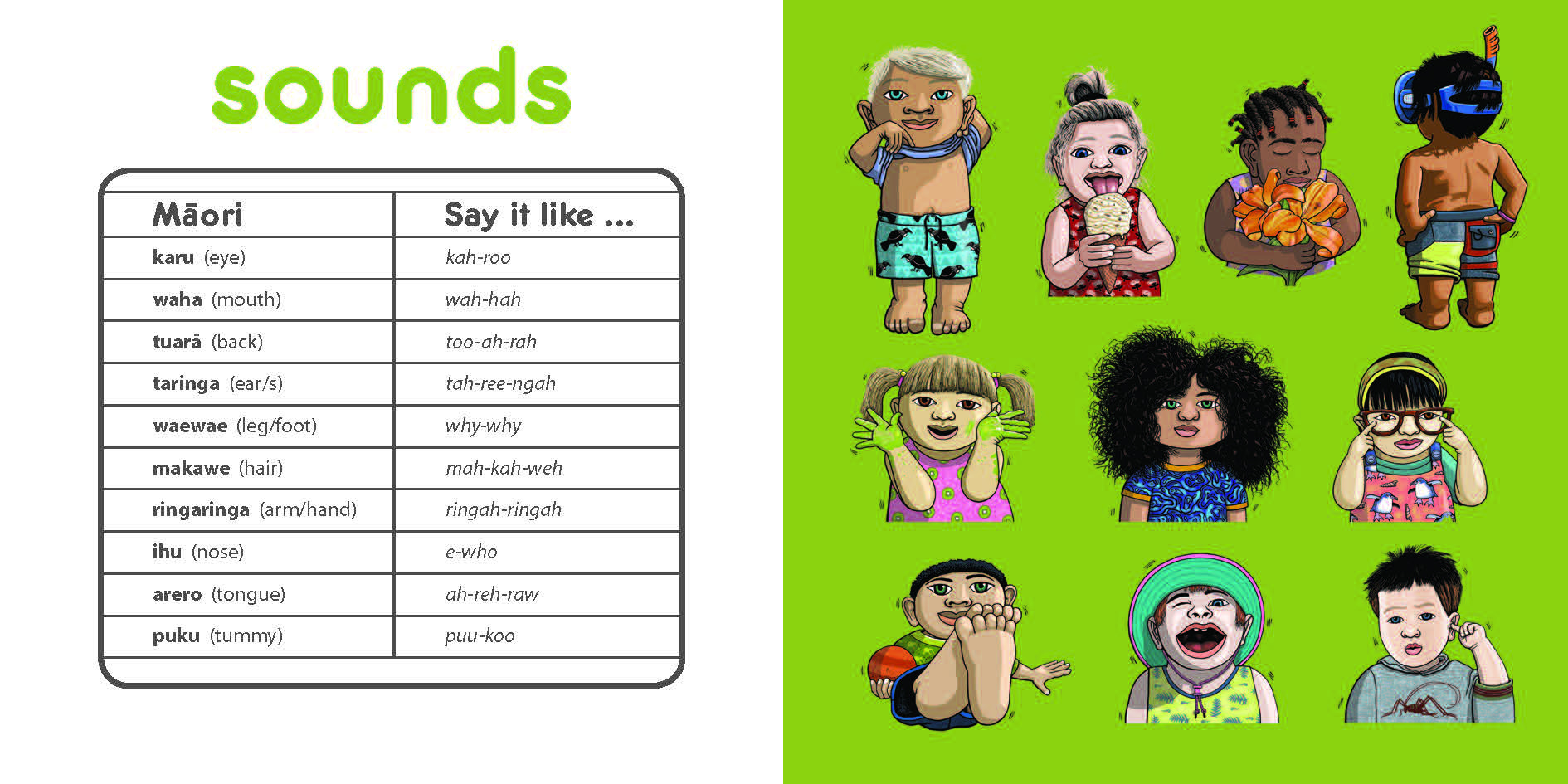
The illustrations of children in My Body are quirky, with some more realistic than others – I’m not entirely keen on the oversized faces on the children, though I am a huge fan of the range of skin tones and hair styles.
The animals are colourful and generally more realistic, even though some of them are smiling. My nearly two-year-old especially enjoys pointing at the bird and shouting, “Manuuuuuuu!”.
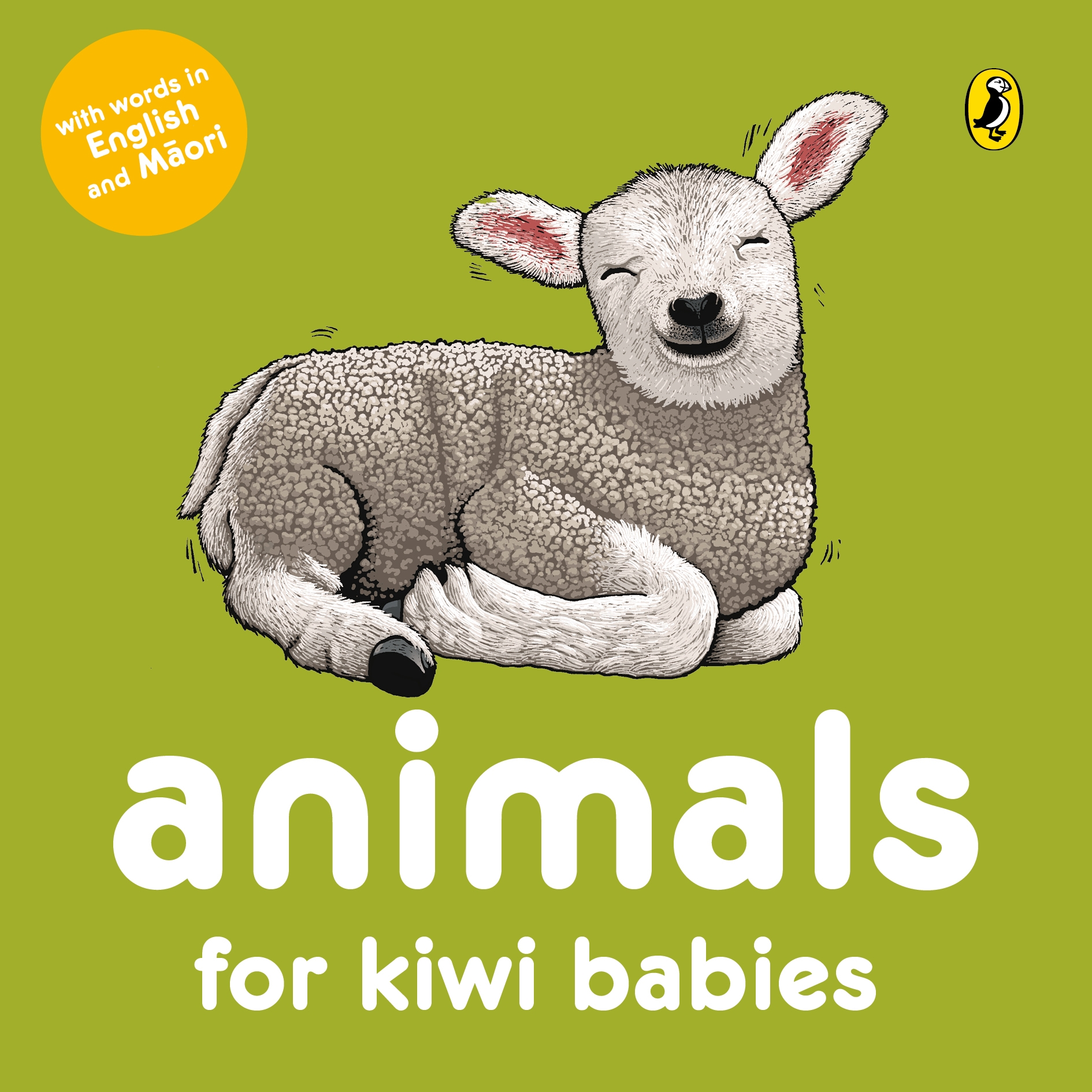
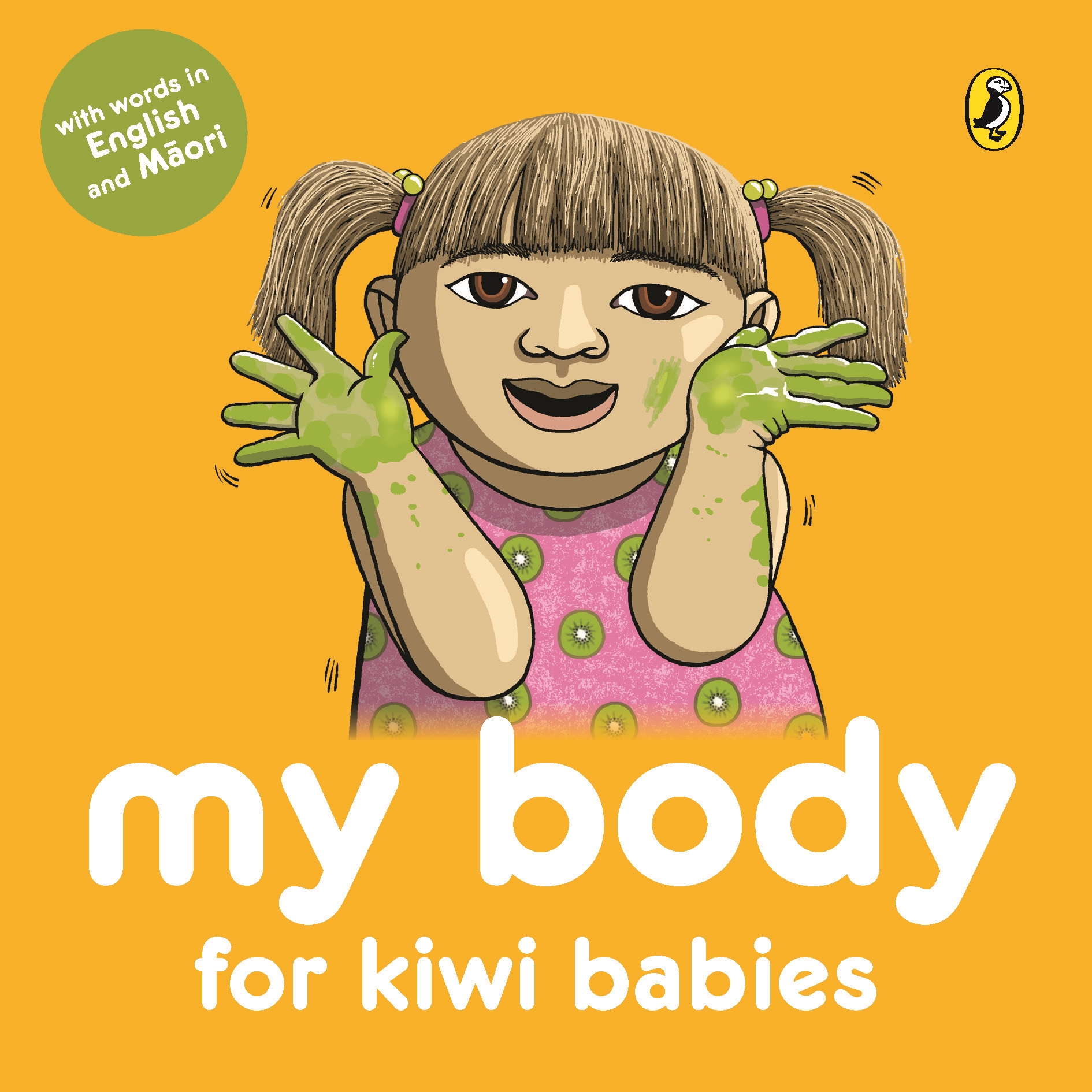
Hairy Maclary and Friends: Colours and Hairy Maclary and Friends: 1 2 3 by Lynley Dodd (Puffin)
Hey, hey, it’s the endlessly repurposable Hairy Maclary and friends! These first-concept bilingual board books are incredibly charming, and provide a number of “ways in” for young readers.
1 2 3 counts from tahi to tekau, with each spread having four lines of text, as follows: whā 4 e whā ngā teti pea four teddy bears
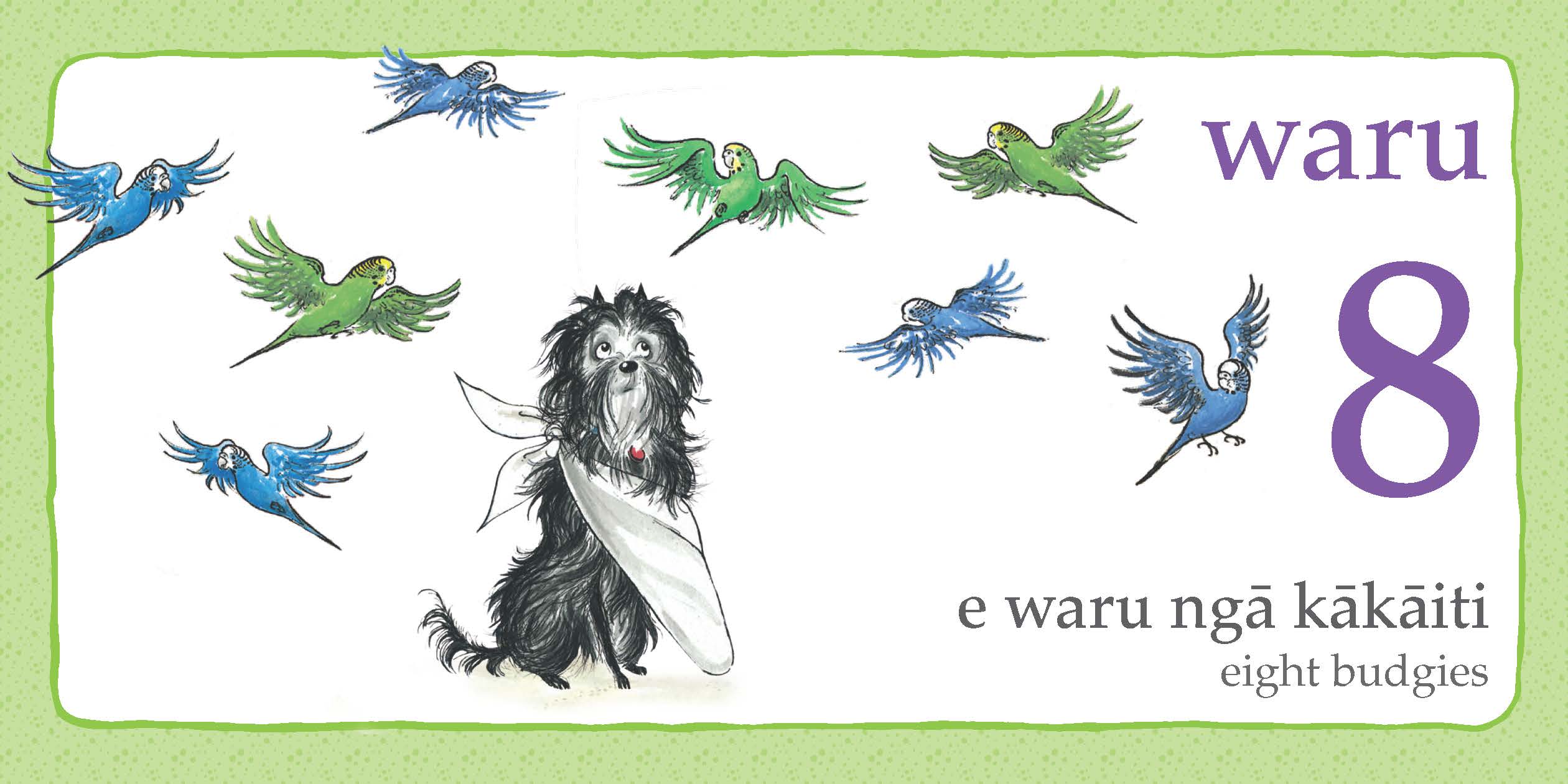
Hairy Maclary features on almost every spread, alongside various friends and familiar scenes from his wider oeuvre. I found some of the scene choices slightly odd – like ‘kotahi te kākā kōrako / one cockatoo’, as I’m not sure that is really one of the first animals/objects a Kiwi kid needs to learn to say in te reo. Overall, though, young ones will have fun counting in English and te reo Māori.
I love Colours. It’s sweetly designed, with well-chosen, humorous scenes illustrating each spread: for example, the waiporoporo spread shows Slinky Malinky pouncing on some toes poking out from under a purple blanket, and kākāriki shows all Hairy’s mates going off for a walk alongside a green fence. My toddler is a fan of this one, too.
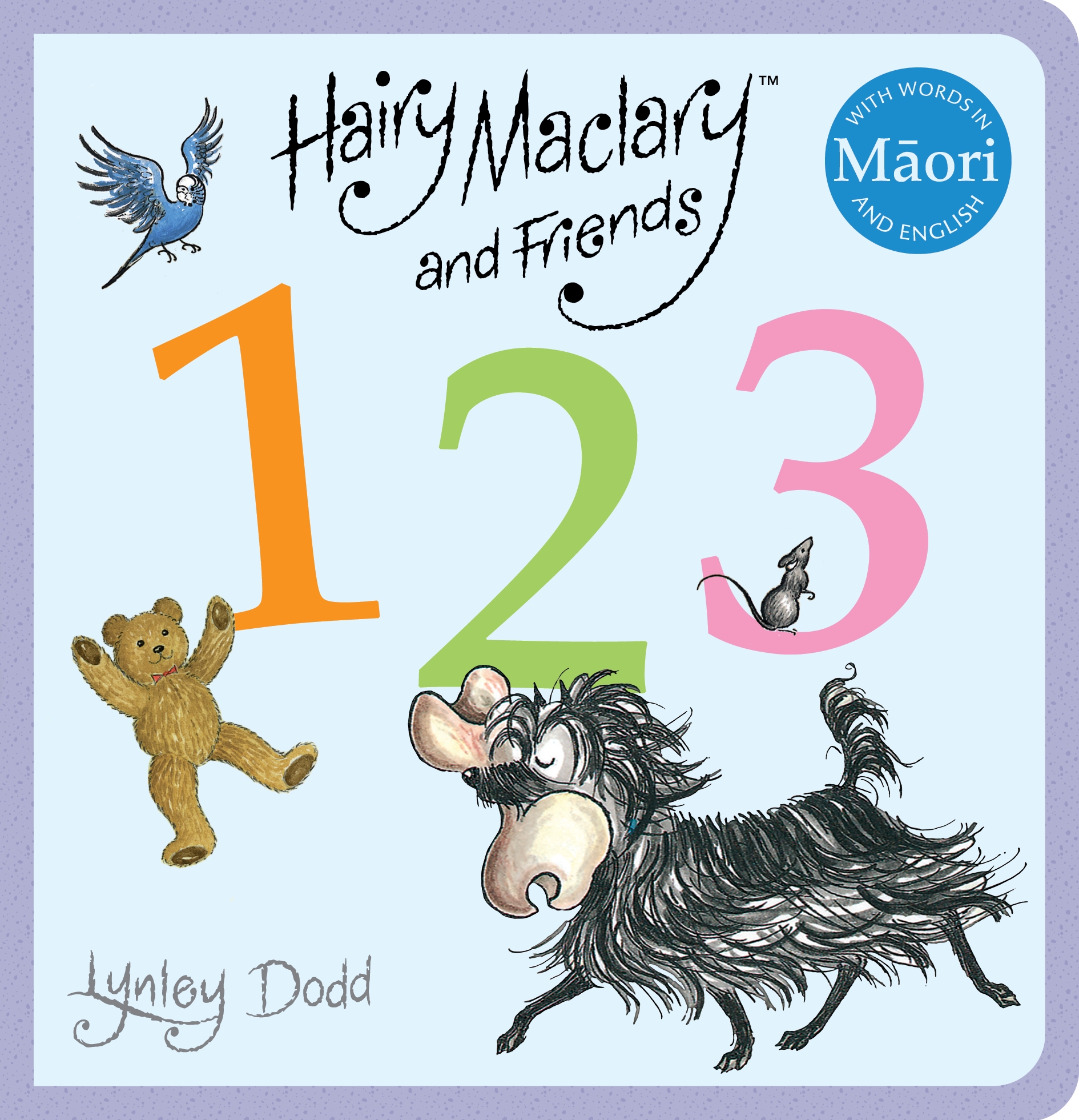
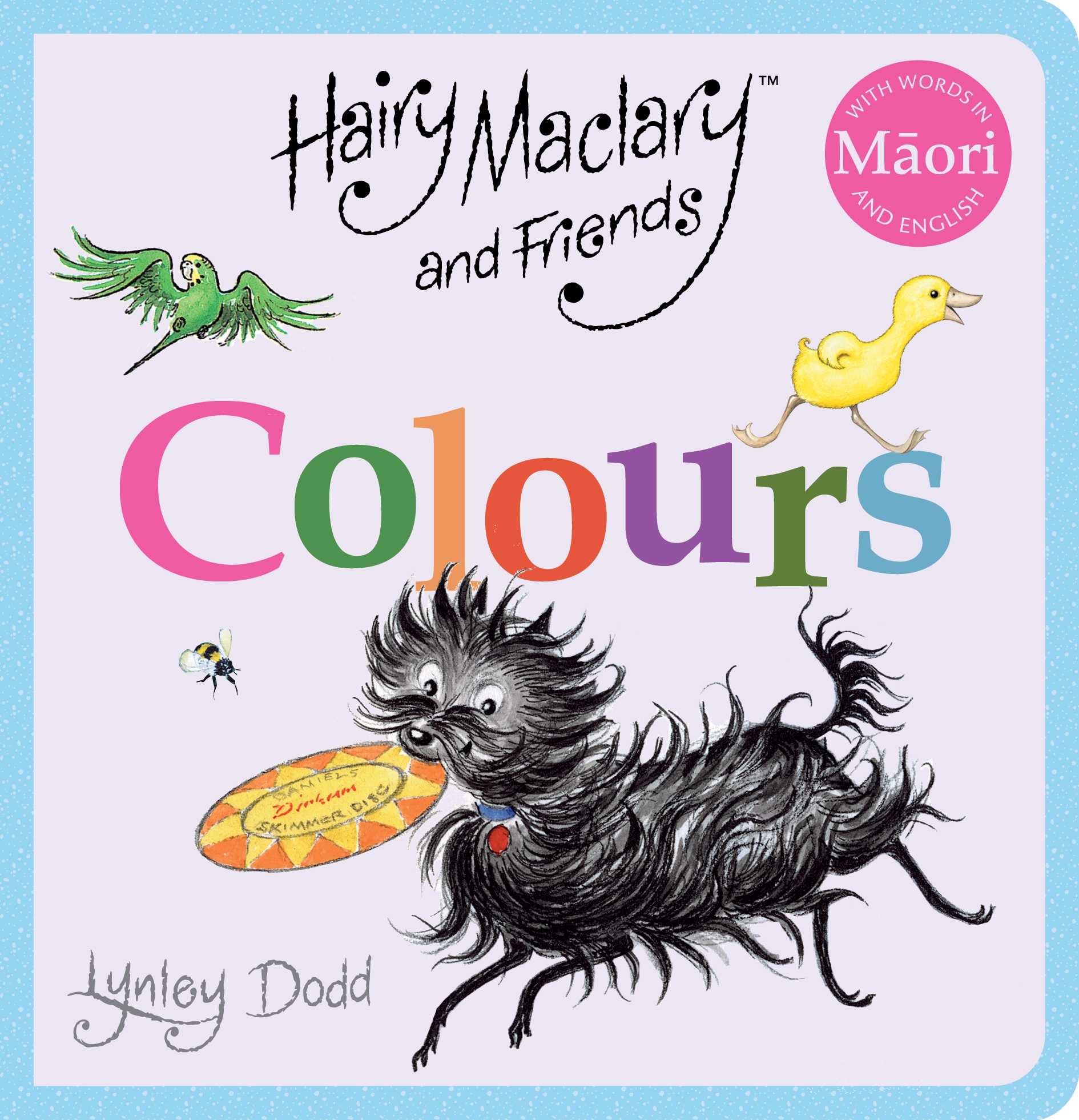
The Princess and the Pirate, by Charlie Holt, Illustrated by Jane Smith (OneTree House)
This picture book is a conventional “feisty girl” tale about Princess Primrose, who acts dutifully by day, but by night becomes a vigilante on horseback. It is set in a olde worlde English-style seaside town, with a castle, taverns, pickpockets and pirates.
The author, Charlie Holt, was highly commended in the Storylines Joy Cowley Award in 2017 for this text. The illustrator, Jane Smith, lives in Nelson and made the illustrations for this book using “digital paint” to create a watercolour effect.
The rhyming story describes how the princess has mostly cleaned up the town of robbers (“‘You’re nicked, my boy!’ / she would shout at the scammer / then quickly escort him … / down to the slammer”) and now has one last baddie to defeat: the pirate, One-eyed Pete. There’s nothing particularly surprising in the plot here, but it is nice to see a female character with some power (and not just because she’s royalty). Princess Primrose’s curly dark hair and brown eyes make a change from the usual blue-eyed princesses.
Princess Primrose’s curly dark hair and brown eyes make a change from the usual blue-eyed princesses.
Because the action happens at night, the illustrations are all very dark. I found this a bit visually tiring sometimes, which wasn’t helped by how busy a number of the spreads are – some of the action sequences are shown as multiple blurry-edged vignettes across two pages. After a while, I craved some white space. Also, design-wise, I wanted to dial back the number of fonts used on the front and back covers and delete the unnecessary, distracting page numbers (and fix up some of the punctuation, while we’re at it).
Overall, the presentation is characterful and endearing, with an adventurous fairy-tale tone. It would make a fun bedtime read-aloud for children who don’t like their action to be too scary.
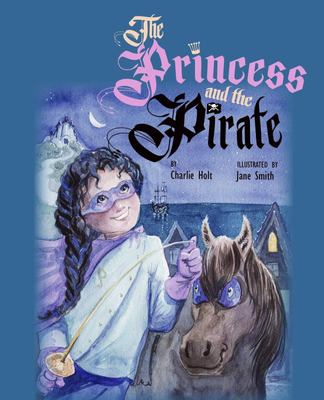
The princess and the pirate
By Charlie Holt
Illustrated by Jane Smith
Published by One Tree House
RRP: $30.00

Jane Arthur
Jane Arthur's debut children's book, Brown Bird(PRH) was published in May 2024 to widespread acclaim. Jane is co-founder of The Sapling, co-owned and managed GOOD BOOKS, a small independent bookshop in Pōneke Wellington and has twice judged the NZ Book Awards for Children and Young Adults, in 2019 and 2020. Her debut poetry collection, Craven (VUP) won the Jessie Mackay Prize for best first book of poetry at the 2020 Ockham NZ Book Awards, and her second collection, Calamities!(THWUP) was longlisted for the Mary and Peter Biggs Award for Poetry in the 2024 Ockham Awards.



